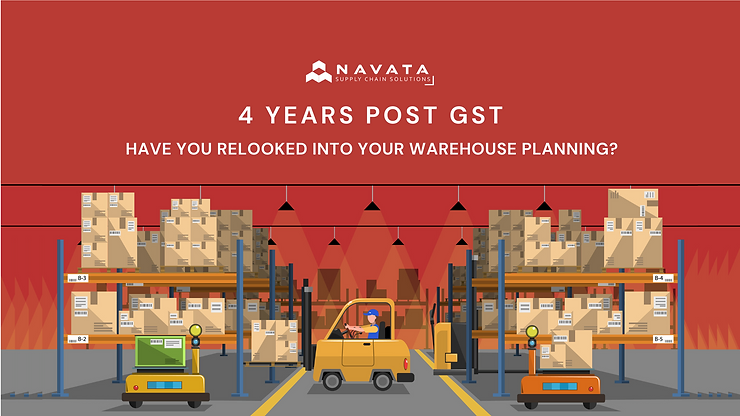The uniform Goods and Service Tax was implemented in the month of July, 2017. It’s almost going to be four years since. While GST was not all good when looking at the supply chain sector as a whole, it was definitely beneficial for warehousing.

How has the GST impacted the warehousing industry?
Pre GST, warehouses were planned according to the central and state tax structure. Warehouses would often be located in the states with the most friendly tax structure, instead of the location that is closest to demand centers. Companies would have multiple warehouses in every state to invade inter-state transportation taxes.
So, how is post GST different?
GST bought in a single central tax for the goods, uniform for all states. It also scrapped away the inter-state taxes for the transportation of goods.
This means that warehouses can be located on actual ‘strategic’ and ‘logical’ factors like proximity to manufacturing units, customers demand centers, ports, highways, availability of labor, cost of land, and so on.
This greatly increases operational efficiency leading to cost savings.
Consolidation of Warehouses
Since they are no interstate goods transportation taxes, multiple warehouses can be consolidated into one large strategically placed one.
The hub-and-spoke model can be followed for freight movement from the large warehouses to different manufacturing plants and wholesale and retail outlets.
With road infrastructure becoming better, express transporters like Navata SCS, with their dynamic routing systems and good connectivity are able to manage great service levels.
There comes the benefit of ‘economies of scale’ from consolidating warehouse management. Managing one large warehouse is easier and cheaper than managing multiple small ones.
Centralization of warehouses also leads to better demand forecasting and prevents the occurrence of stock runouts or dead stocks.
Enabling Warehouse Technology
Consolidation enables the use of warehouse technology. It is not otherwise feasible to install tech at multiple small warehouses.
Warehouse technology can be as basic as an Enterprise Resource Planning software or as advanced as the use of robots.
Both lead to an increase in operational efficiency and better lead time. It also decreases the errors in execution.
Thus post GST definitely calls for a ‘Warehouse reengineering’
Recently we at, Navata SCS, reorganized the warehouses for a construction equipment company.
They initially had 27 warehouses spread across two states. After a detailed analysis of their distribution system using machine learning and data analytics tools, we cut down their number of warehouses to just 7, offering huge cost savings while maintaining the same delivery time!
So, if you haven’t looked into your warehouse planning, post-GST, it’s high time you do. The cost-saving can even reflect in the end MRP for customers.
Navata SCS provides warehouse planning and management services. Click here to get in touch.

